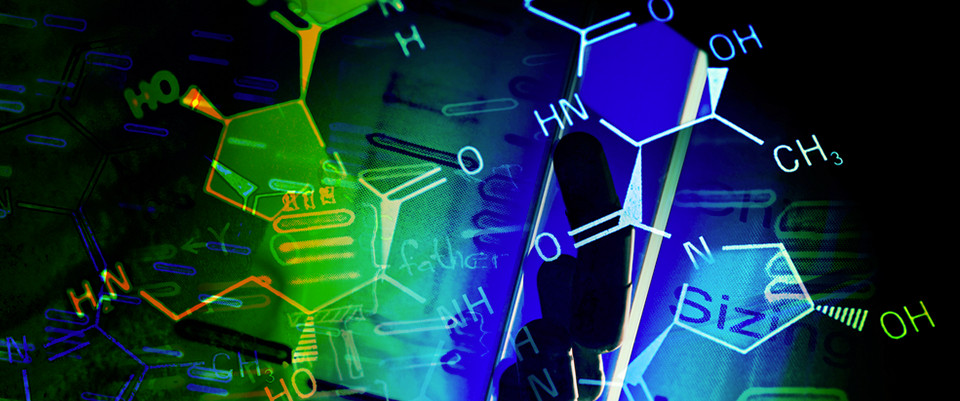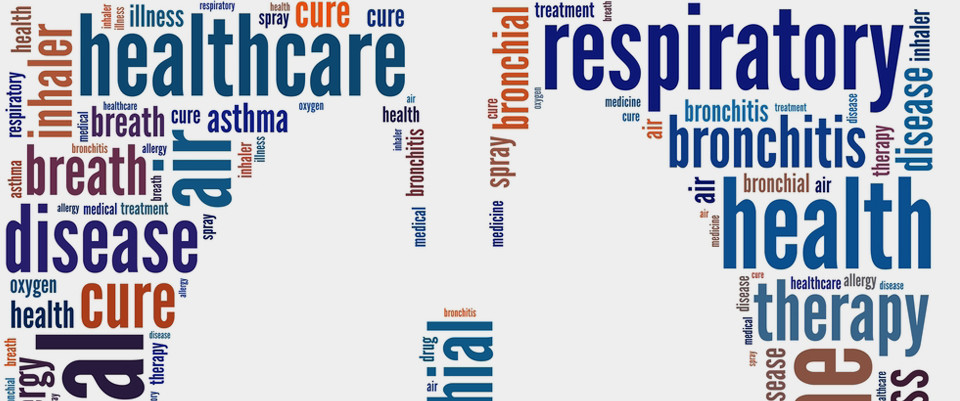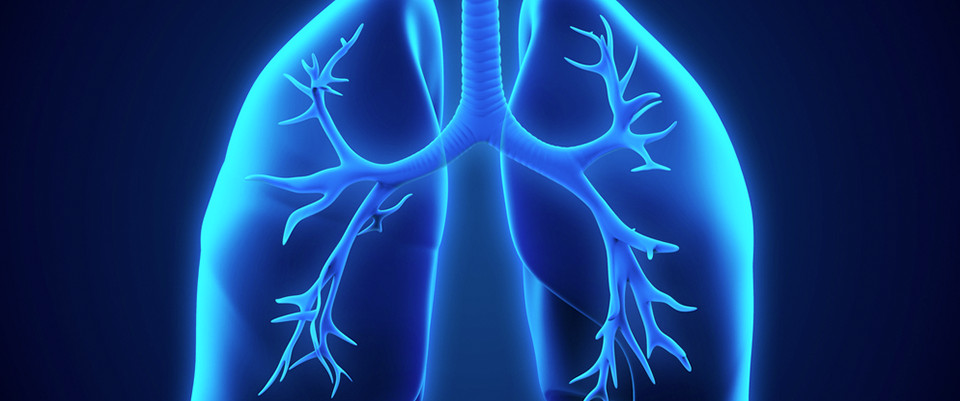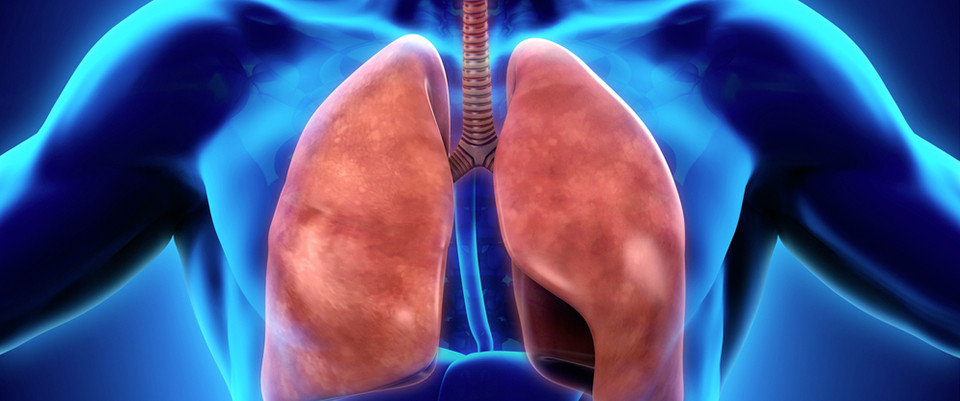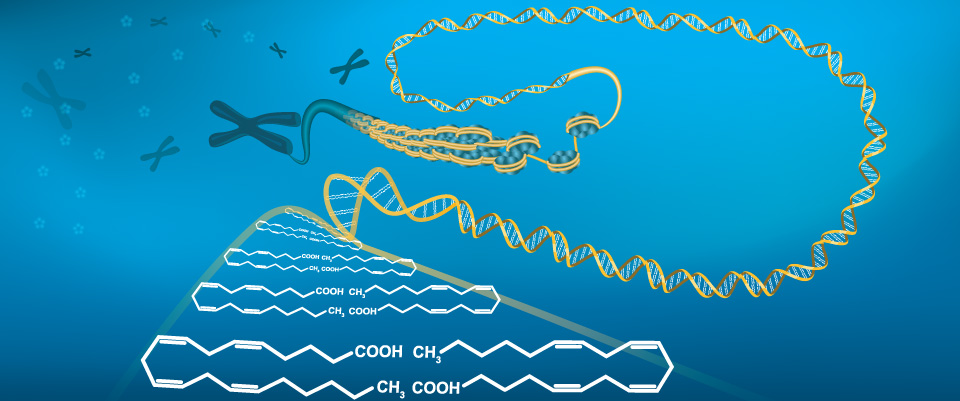PubMed
A dolabralexin-deficient mutant provides insight into specialized diterpenoid metabolism in maize
Plant Physiol. 2023 Mar 10:kiad150. doi: 10.1093/plphys/kiad150. Online ahead of print.ABSTRACTTwo major groups of specialized metabolites in maize (Zea mays), termed kauralexins and dolabralexins, serve as known or predicted diterpenoid defenses against pathogens, herbivores, and other environmental stressors. To consider physiological roles of the recently discovered dolabralexin pathway, we examined dolabralexin structural diversity, tissue specificity, and stress-elicited production in a defined biosynthetic pathway mutant. Metabolomics analyses support a larger number of dolabralexin pathway products than previously known. We identified dolabradienol as a previously undetected pathway metabolite and characterized its enzymatic production. Transcript and metabolite profiling showed that dolabralexin biosynthesis and accumulation predominantly occur in primary roots and show quantitative variation across genetically diverse inbred lines. Generation and analysis of CRISPR-Cas9-derived loss-of-function Kaurene Synthase-Like 4 (Zmksl4) mutants demonstrated dolabralexin production deficiency, thus supporting ZmKSL4 as the diterpene synthase responsible for the conversion of geranylgeranyl pyrophosphate precursors into dolabradiene and downstream pathway products. Zmksl4 mutants further display altered root-to-shoot ratios and root architecture in response to water deficit. Collectively, these results demonstrate dolabralexin biosynthesis via ZmKSL4 as a committed pathway node biochemically separating kauralexin and dolabralexin metabolism, and suggest an interactive role of maize dolabralexins in plant vigor during abiotic stress.PMID:36896653 | DOI:10.1093/plphys/kiad150
Investigation on the immunotoxicity induced by Emamectin benzoate on THP-1 macrophages based on metabolomics analysis
Environ Toxicol. 2023 Mar 9. doi: 10.1002/tox.23747. Online ahead of print.ABSTRACTEmamectin benzoate (EMB) is an insecticide extensively used in agricultural area. Assessing the toxic effects of EMB in mammals or humans and its endogenous metabolites alteration are the appropriate means of evaluating its risks to human health. In the study, THP-1 macrophage, a human immune model, was applied to investigate the immunotoxicity of EMB. A global metabolomics approach was developed to analyze metabolic perturbation on macrophages and discover the potential biomarkers of EMB-induced immunotoxicity. The results indicated that EMB could inhibit immune functions of macrophages. Based on metabolomics analysis, our results illustrated that EMB caused significant alterations in metabolic profiles on macrophages. 22 biomarkers associated with immune response were screened by pattern recognition and multivariate statistical analysis. Furthermore, pathway analysis identified purine metabolism was the most relevant pathway in the metabolic process and the abnormal conversion of AMP to xanthosine regulated by NT5E might be a potential mechanism of immunotoxicity induced by EMB. Our study provides important insights for understanding and underlying mechanism of immunotoxicity exposed to EMB.PMID:36896474 | DOI:10.1002/tox.23747
Acupuncture ameliorates Mobile Phone Addiction with sleep disorders and restores salivary metabolites rhythm
Front Psychiatry. 2023 Feb 21;14:1106100. doi: 10.3389/fpsyt.2023.1106100. eCollection 2023.ABSTRACTOBJECTIVES: Mobile Phone Addiction (MPA) is a novel behavioral addiction resulting in circadian rhythm disorders that severely affect mental and physical health. The purpose of this study is to detect rhythmic salivary metabolites in MPA with sleep disorder (MPASD) subjects and investigate the effects of acupuncture.METHODS: Six MPASD patients and six healthy controls among the volunteers were enrolled by MPA Tendency Scale (MPATS) and Pittsburgh Sleep Quality Index (PSQI), then the salivary samples of MPASD and healthy controls were collected every 4-h for three consecutive days. Acupuncture was administered for 7 days to MPASD subjects, then saliva samples were collected again. Salivary metabolomes were analyzed with the method of LC-MS.RESULT: According to our investigation, 70 (57.85%) MPA patients and 56 (46.28%) MPASD patients were identified among 121 volunteers. The symptoms of the 6 MPASD subjects were significantly alleviated after acupuncture intervention. The number of rhythmic saliva metabolites dropped sharply in MPASD subjects and restored after acupuncture. Representative rhythmic saliva metabolites including melatonin, 2'-deoxyuridine, thymidine, thymidine 3',5'-cyclic monophosphate lost rhythm and restored after acupuncture, which may attribute to promising MPASD treatment and diagnosis biomarkers. The rhythmic saliva metabolites of healthy controls were mainly enriched in neuroactive ligand-receptor interaction, whereas polyketide sugar unit biosynthesis was mainly enriched in MPASD patients.CONCLUSION: This study revealed circadian rhythm characteristics of salivary metabolites in MPASD and that acupuncture could ameliorate MPASD by restoring part of the dysrhythmia salivary metabolites.PMID:36896350 | PMC:PMC9989025 | DOI:10.3389/fpsyt.2023.1106100
Shifts in Intestinal Metabolic Profile Among Kidney Transplantation Recipients with Antibody-Mediated Rejection
Ther Clin Risk Manag. 2023 Mar 3;19:207-217. doi: 10.2147/TCRM.S401414. eCollection 2023.ABSTRACTBACKGROUND: Antibody-mediated rejection (AMR) is emerging as the main cause of graft loss after kidney transplantation. Our previous study revealed the gut microbiota alternation associated with AMR in kidney transplant recipients, which was predicted to affect the metabolism-related pathways.METHODS: To further investigate the shifts in intestinal metabolic profile among kidney transplantation recipients with AMR, fecal samples from kidney transplant recipients and patients with end-stage renal disease (ESRD) were subjected to untargeted LC-MS-based metabolomics.RESULTS: A total of 86 individuals were enrolled in this study, including 30 kidney transplantation recipients with AMR, 35 kidney transplant recipients with stable renal function (KT-SRF), and 21 participants with ESRD. Fecal metabolome in patients with ESRD and kidney transplantation recipients with KT-SRF were parallelly detected as controls. Our results demonstrated that intestinal metabolic profile of patients with AMR differed significantly from those with ESRD. A total of 172 and 25 differential metabolites were identified in the KT-AMR group, when compared with the ESRD group and the KT-SRF group, respectively, and 14 were common to the pairwise comparisons, some of which had good discriminative ability for AMR. KEGG pathway enrichment analysis demonstrated that the different metabolites between the KT-AMR and ESRD groups or between KT-AMR and KT-SRF groups were significantly enriched in 33 or 36 signaling pathways, respectively.CONCLUSION: From the metabolic point of view, our findings may provide key clues for developing effective diagnostic biomarkers and therapeutic targets for AMR after kidney transplantation.PMID:36896026 | PMC:PMC9990454 | DOI:10.2147/TCRM.S401414
Alteration of gut microbiome and metabolome by <em>Clostridium butyricum</em> can repair the intestinal dysbiosis caused by antibiotics in mice
iScience. 2023 Feb 13;26(3):106190. doi: 10.1016/j.isci.2023.106190. eCollection 2023 Mar 17.ABSTRACTThis study evaluated the repair effects of Clostridium butyricum (CBX 2021) on the antibiotic (ABX)-induced intestinal dysbiosis in mice by the multi-omics method. Results showed that ABX eliminated more than 90% of cecal bacteria and also exerted adverse effects on the intestinal structure and overall health in mice after 10 days of the treatment. Of interest, supplementing CBX 2021 in the mice for the next 10 days colonized more butyrate-producing bacteria and accelerated butyrate production compared with the mice by natural recovery. The reconstruction of intestinal microbiota efficiently promoted the improvement of the damaged gut morphology and physical barrier in the mice. In addition, CBX 2021 significantly reduced the content of disease-related metabolites and meanwhile promoted carbohydrate digestion and absorption in mice followed the microbiome alternation. In conclusion, CBX 2021 can repair the intestinal ecology of mice damaged by the antibiotics through reconstructing gut microbiota and optimizing metabolic functions.PMID:36895644 | PMC:PMC9988658 | DOI:10.1016/j.isci.2023.106190
Effects of processing on the efficacy and metabolites of Cistanche tubulosa based on UPLC-Q/TOF-MS
Biomed Chromatogr. 2023 Mar 9:e5621. doi: 10.1002/bmc.5621. Online ahead of print.ABSTRACTCistanche tubulosa (CT), a well-known TCM, has always been processed with rice wine for the treatment of kidney-yang deficiency syndrome (KYDS) since time immemorial. In order to explore the effect of processing on the efficacy and metabolites of CT in vivo, a comprehensive method using ultra-performance liquid chromatography coupled with quadrupole time-of-flight mass spectrometry (UPLC-Q/TOF-MS) was established for the analysis of the altered endogenous metabolites in response to the intervention of the raw and processed CT in KYDS model, and the metabolites of the absorbed compounds in rats after gastric perfusion. It was showed that CT could improve KYDS, and the effect of processed product was more significant. A total of 47 differential metabolites were identified in urine. Pathway analysis proved that purine metabolism, alanine, aspartate and glutamate metabolism, and citrate cycle were the main pathways. Furthermore, 53 prototypes and 48 metabolites have been detected in rats. This was the first systematic research focus on the metabolites of raw and processed CT in vivo, which could provide a scientific basis for explaining the increasing efficiency of the processed CT. Moreover, it provides a valuable strategy for analyzing the chemical components and metabolites of other traditional Chinese medicine prescriptions.PMID:36895149 | DOI:10.1002/bmc.5621
Genetic mapping and molecular mechanism behind color variation in the Asian vine snake
Genome Biol. 2023 Mar 9;24(1):46. doi: 10.1186/s13059-023-02887-z.ABSTRACTBACKGROUND: Reptiles exhibit a wide variety of skin colors, which serve essential roles in survival and reproduction. However, the molecular basis of these conspicuous colors remains unresolved.RESULTS: We investigate color morph-enriched Asian vine snakes (Ahaetulla prasina), to explore the mechanism underpinning color variations. Transmission electron microscopy imaging and metabolomics analysis indicates that chromatophore morphology (mainly iridophores) is the main basis for differences in skin color. Additionally, we assemble a 1.77-Gb high-quality chromosome-anchored genome of the snake. Genome-wide association study and RNA sequencing reveal a conservative amino acid substitution (p.P20S) in SMARCE1, which may be involved in the regulation of chromatophore development initiated from neural crest cells. SMARCE1 knockdown in zebrafish and immunofluorescence verify the interactions among SMARCE1, iridophores, and tfec, which may determine color variations in the Asian vine snake.CONCLUSIONS: This study reveals the genetic associations of color variation in Asian vine snakes, providing insights and important resources for a deeper understanding of the molecular and genetic mechanisms related to reptilian coloration.PMID:36895044 | DOI:10.1186/s13059-023-02887-z
Effect of environmental variance-based resilience selection on the gut metabolome of rabbits
Genet Sel Evol. 2023 Mar 9;55(1):15. doi: 10.1186/s12711-023-00791-5.ABSTRACTBACKGROUND: Gut metabolites are key actors in host-microbiota crosstalk with effect on health. The study of the gut metabolome is an emerging topic in livestock, which can help understand its effect on key traits such as animal resilience and welfare. Animal resilience has now become a major trait of interest because of the high demand for more sustainable production. Composition of the gut microbiome can reveal mechanisms that underlie animal resilience because of its influence on host immunity. Environmental variance (VE), specifically the residual variance, is one measure of resilience. The aim of this study was to identify gut metabolites that underlie differences in the resilience potential of animals originating from a divergent selection for VE of litter size (LS). We performed an untargeted gut metabolome analysis in two divergent rabbit populations for low (n = 13) and high (n = 13) VE of LS. Partial least square-discriminant analysis was undertaken, and Bayesian statistics were computed to determine dissimilarities in the gut metabolites between these two rabbit populations.RESULTS: We identified 15 metabolites that discriminate rabbits from the divergent populations with a prediction performance of 99.2% and 90.4% for the resilient and non-resilient populations, respectively. These metabolites were suggested to be biomarkers of animal resilience as they were the most reliable. Among these, five that derived from the microbiota metabolism (3-(4-hydroxyphenyl)lactate, 5-aminovalerate, and equol, N6-acetyllysine, and serine), were suggested to be indicators of dissimilarities in the microbiome composition between the rabbit populations. The abundances of acylcarnitines and metabolites derived from the phenylalanine, tyrosine, and tryptophan metabolism were low in the resilient population and these pathways can, therefore impact the inflammatory response and health status of animals.CONCLUSIONS: This is the first study to identify gut metabolites that could act as potential resilience biomarkers. The results support differences in resilience between the two studied rabbit populations that were generated by selection for VE of LS. Furthermore, selection for VE of LS modified the gut metabolome, which could be another factor that modulates animal resilience. Further studies are needed to determine the causal role of these metabolites in health and disease.PMID:36894894 | DOI:10.1186/s12711-023-00791-5
Author Correction: Proteasome inhibition targets the KMT2A transcriptional complex in acute lymphoblastic leukemia
Nat Commun. 2023 Mar 9;14(1):1297. doi: 10.1038/s41467-023-37141-4.NO ABSTRACTPMID:36894563 | DOI:10.1038/s41467-023-37141-4
Associations among the genome, rumen metabolome, ruminal bacteria, and milk production in early-lactation Holsteins
J Dairy Sci. 2023 Mar 7:S0022-0302(23)00110-8. doi: 10.3168/jds.2022-22573. Online ahead of print.ABSTRACTA multicenter observational study to evaluate genome-wide association was conducted in early-lactation Holstein cows (n = 293) from 36 herds in Canada, the USA, and Australia. Phenotypic observations included rumen metabolome, acidosis risk, ruminal bacterial taxa, and milk composition and yield measures. Diets ranged from pasture supplemented with concentrates to total mixed rations (nonfiber carbohydrates = 17 to 47, and neutral detergent fiber = 27 to 58% of dry matter). Rumen samples were collected <3 h after feeding and analyzed for pH, ammonia, d- and l-lactate, volatile fatty acid (VFA) concentrations, and abundance of bacterial phyla and families. Eigenvectors were produced using cluster and discriminant analyses from a combination of pH and ammonia, d-lactate, and VFA concentrations, and were used to estimate the probability of the risk of ruminal acidosis based on proximity to the centroid of 3 clusters, termed high (24.0% of cows), medium (24.2%), and low risk (51.8%) for acidosis. DNA of sufficient quality was successfully extracted from whole blood (218 cows) or hair (65 cows) collected simultaneously with the rumen samples and sequenced using the Geneseek Genomic Profiler Bovine 150K Illumina SNPchip. Genome-wide association used an additive model and linear regression with principal component analysis (PCA) population stratification and a Bonferroni correction for multiple comparisons. Population structure was visualized using PCA plots. Single genomic markers were associated with milk protein percent and the center logged ratio abundance of the phyla Chloroflexi, SR1, and Spirochaetes, and tended to be associated with milk fat yield, rumen acetate, butyrate, and isovalerate concentrations and with the probability of being in the low-risk acidosis group. More than one genomic marker was associated or tended to be associated with rumen isobutyrate and caproate concentrations, and the center log ratio of the phyla Bacteroidetes and Firmicutes and center log ratio of the families Prevotellaceae, BS11, S24-7, Acidaminococcaceae, Carnobacteriaceae, Lactobacillaceae, Leuconostocaceae, and Streptococcaceae. The provisional NTN4 gene, involved in several functions, had pleiotropy with 10 bacterial families, the phyla Bacteroidetes and Firmicutes, and butyrate. The ATP2CA1 gene, involved in the ATPase secretory pathway for Ca2+ transport, overlapped for the families Prevotellaceae, S24-7, and Streptococcaceae, the phylum Bacteroidetes, and isobutyrate. No genomic markers were associated with milk yield, fat percentage, protein yield, total solids, energy-corrected milk, somatic cell count, rumen pH, ammonia, propionate, valerate, total VFA, and d-, l-, or total lactate concentrations, or probability of being in the high- or medium-risk acidosis groups. Genome-wide associations with the rumen metabolome, microbial taxa, and milk composition were present across a wide geographical and management range of herds, suggesting the existence of markers for the rumen environment but not for acidosis susceptibility. The variation in pathogenesis of ruminal acidosis in the small population of cattle in the high risk for acidosis group and the dynamic nature of the rumen as cows cycle through a bout of acidosis may have precluded the identification of markers for acidosis susceptibility. Despite a limited sample size, this study provides evidence of interactions between the mammalian genome, the rumen metabolome, ruminal bacteria, and milk protein percentage.PMID:36894426 | DOI:10.3168/jds.2022-22573
Differences in uterine and serum metabolome associated with metritis in dairy cows
J Dairy Sci. 2023 Mar 7:S0022-0302(23)00108-X. doi: 10.3168/jds.2022-22552. Online ahead of print.ABSTRACTObjectives were to evaluate differences in the uterine and serum metabolomes associated with metritis in dairy cows. Vaginal discharge was evaluated using a Metricheck device (Simcro) at 5, 7, and 11 d in milk (DIM; herd 1) or 4, 6, 8, 10, and 12 DIM (herd 2). Cows with reddish or brownish, watery, and fetid discharge were diagnosed with metritis (n = 24). Cows with metritis were paired with herdmates without metritis (i.e., clear mucous vaginal discharge or clear lochia with ≤50% of pus) based on DIM and parity (n = 24). Day of metritis diagnosis was considered study d 0. All cows diagnosed with metritis received antimicrobial therapy. The metabolome of uterine lavage collected on d 0 and 5, and serum samples collected on d 0 were evaluated using untargeted gas chromatography time-of-flight mass spectrometry. Normalized data were subjected to multivariate canonical analysis of population using the MultBiplotR and MixOmics packages in R Studio. Univariate analyses including t-test, principal component analyses, partial least squares discriminant analyses, and pathway analyses were conducted using Metaboanalyst. The uterine metabolome differed between cows with and without metritis on d 0. Differences in the uterine metabolome associated with metritis on d 0 were related to the metabolism of butanoate, amino acids (i.e., glycine, serine, threonine, alanine, aspartate, and glutamate), glycolysis and gluconeogenesis, and the tricarboxylic acid cycle. No differences in the serum metabolome were observed between cows diagnosed with metritis and counterparts without metritis on d 0. Similarly, no differences in uterine metabolome were observed between cows with metritis and counterparts not diagnosed with metritis on d 5. These results indicate that the establishment of metritis in dairy cows is associated with local disturbances in amino acid, lipid, and carbohydrate metabolism in the uterus. The lack of differences in the uterine metabolome on d 5 indicates that processes implicated with the disease are reestablished by d 5 after diagnosis and treatment.PMID:36894419 | DOI:10.3168/jds.2022-22552
The Relationship Between Diet, Gut Microbiota, and Serum Metabolome of South Asian Infants at 1 Year
J Nutr. 2023 Feb;153(2):470-482. doi: 10.1016/j.tjnut.2022.12.016. Epub 2022 Dec 27.ABSTRACTBACKGROUND: Diet is known to affect the gut microbiota and the serum metabolome in adults, but this has not been fully explored in infants. Infancy is an important developmental period that may influence a person's long-term health. Infant development can be affected by diet, which also interacts with the developing gut microbiota.OBJECTIVES: This study aimed to explore the associations between diet, the gut microbiota, and the serum metabolome of 1-y-old infants with the overarching goal of identifying serum biomarkers of diet and/or the gut microbiota.METHODS: We derived dietary patterns of 1-y-old infants (n = 182) participating in the Canadian South Asian Birth Cohort (START) study. We compared gut microbiota α-diversity and β-diversity and taxa relative abundance from 16S rRNA gene profiles with dietary patterns (PERMANOVA, Envfit) and investigated diet-serum metabolite associations using a multivariate analysis (partial least squares-discriminant analysis) and univariate analysis (t test). We explored the effect of nondietary factors on diet-serum metabolite relationships by incorporating diet, the gut microbiota, and maternal, perinatal, and infant characteristics in a multivariable forward stepwise regression. We replicated this analysis in White European infants, from the CHILD Cohort Study (n = 81).RESULTS: A dietary pattern characterized by formula consumption and negatively associated with breastfeeding most strongly predicted variation in the gut microbiota (R2 = 0.109) and serum metabolome (R2 = 0.547). Breastfed participants showed higher abundance of microbes from the genera Bifidobacterium (3.29 log2-fold) and Lactobacillus (7.93 log2-fold) and higher median concentrations of the metabolites S-methylcysteine (1.38 μM) and tryptophan betaine (0.43 μM) than nonbreastfed participants. Formula consuming infants showed higher median concentrations of branched-chain/aromatic amino acids (average 48.3 μM) than non-formula-consuming infants.CONCLUSIONS: Formula consumption and breastfeeding most strongly predicted the serum metabolites of 1-y-old infants, even when the gut microbiota, solid food consumption, and other covariates were considered.PMID:36894240 | DOI:10.1016/j.tjnut.2022.12.016
UPLC-QTOF-MS/MS-based metabolomic approach and gastroprotective effect of two chemotypes of Egletes viscosa (L.) less. against ethanol-induced gastric ulcer in mice
J Ethnopharmacol. 2023 Mar 7:116348. doi: 10.1016/j.jep.2023.116348. Online ahead of print.ABSTRACTETHNOPHARMACOLOGICAL RELEVANCE: Egletes viscosa (L.) (macela) is a native wild herb that can be found in different states of northeastern Brazil. The infusions of its flower buds are traditionally used for the treatment of gastrointestinal disorders. E. viscosa possesses two chemotypes (named A and B), distinguishable by the composition of the essential oil from the flower buds. Although there are previous studies of the gastroprotective effect of the isolated constituents of E. viscosa, its infusions have not been investigated yet.AIM OF THE STUDY: The present study aimed to evaluate and compare the chemical composition and the gastroprotective effect of flower bud infusions of E. viscosa from chemotype A (EVCA) and chemotype B (EVCB).MATERIALS AND METHODS: Sixteen infusions were brewed with flower buds according to the traditional preparation mode and were analyzed through a UPLC-QTOF-MS/MS based metabolomic approach for determination of their metabolic fingerprints and quantification of bioactive compounds. Afterward, these data were analyzed by chemometric methods (OPLS-DA) for discrimination of the two chemotypes. Additionally, infusions of EVCA and EVCB (50, 100 and 200 mg/kg, p.o.) were evaluated on gastric ulcers induced by absolute ethanol (96%, 0.2 mL, p.o.) in mice. To elucidate the gastroprotective mechanisms, the effect of EVCA and EVCB on gastric acid secretion and gastric wall mucus was determined and the role of TRPV1 channels, prostaglandins, nitric oxide and KATP channels were assessed. Moreover, the oxidative stress-related parameters and the histological aspects of the stomach tissue were analyzed.RESULTS: The chemotypes can be discriminated from each other using UPLC-QTOF-MS/MS chemical fingerprints. Both chemotypes presented similar chemical compositions, consisting basically of caffeic acid derivatives, flavonoids and diterpenes. The quantification of bioactive compounds demonstrated that chemotype A possesses more ternatin, tanabalin and centipedic than chemotype B. EVCA and EVCB (50, 100 and 200 mg/kg, p.o.) significantly decreased the severity of ethanol-induced gastric lesions, as shown by a reduction in histological alterations and leucocyte infiltration in gastric tissue. The gastroprotective mechanism of both infusions involves an antioxidant effect, maintenance of gastric mucus and reduction gastric secretion. Stimulation of endogenous prostaglandins and nitric oxide release, activation of TRPV1 channels, and KATP channels are also involved in the gastroprotection of the infusions.CONCLUSION: The gastroprotective effect of EVCA and EVCB was equivalent and mediated through antioxidant and antisecretory actions, including the activation of TRPV1 receptors, stimulation of endogenous prostaglandins and nitric oxide, and opening of KATP channels. The presence of caffeic acid derivatives, flavonoids and diterpenes in both infusions is involved in mediating this protective effect. Our findings support the traditional use of infusions of E. viscosa for gastric disorders regardless of the chemotype.PMID:36894109 | DOI:10.1016/j.jep.2023.116348
Potential biomarkers and metabolomics of acetaminophen-induced liver injury during alcohol consumption: A preclinical investigation on C57/BL6 mice
Toxicol Appl Pharmacol. 2023 Mar 7:116451. doi: 10.1016/j.taap.2023.116451. Online ahead of print.ABSTRACTThe toxic effects of alcohol consumption on population health are significant worldwide and the synergistic toxic effects of concurrent intake of Acetaminophen and alcohol is of clinical concern. The understanding of molecular mechanisms beneath such synergism and acute toxicity may be enhanced through assessing underlying metabolomics changes. The molecular toxic activities of the model hereby, is assessed though metabolomics profile with a view to identifying metabolomics targets which could aid in the management of drug-alcohol interactions. In vivo exposure of C57/BL6 mice to APAP (70 mg/kg), single dose of ethanol (6 g/kg of 40%) and APAP after alcohol consumption was employed. Plasma samples were prepared and subjected to biphasic extraction for complete LC-MS profiling, and tandem mass MS2 analysis. Among the detected ions, 174 ions had significant (VIP scores >1 and FDR <0.05) changes between groups and were selected as potential biomarkers and significant variables. The presented metabolomics approach highlighted several affected metabolic pathways, including nucleotide and amino acid metabolism; aminoacyl-tRNA biosynthesis as well as bioenergetics of TCA and Krebs cycle. The impact of APAP on the concurrent administration of alcohol showed great biological interactions in the vital ATP and amino acid producing processes. The metabolomics changes show distinct metabolites which are altered to alcohol-APAP consumption while presenting several unneglectable risks on the vitality of metabolites and cellular molecules which shall be concerned.PMID:36894070 | DOI:10.1016/j.taap.2023.116451
From lead to clinic: A review of the structural design of P2X7R antagonists
Eur J Med Chem. 2023 Mar 3;251:115234. doi: 10.1016/j.ejmech.2023.115234. Online ahead of print.ABSTRACTP2X7R, which is a member of the purinergic P2 receptor family, is widely expressed in many immune cells, such as macrophages, lymphocytes, monocytes, and neutrophils. P2X7R is upregulated in response to proinflammatory stimulation, which is closely related to a variety of inflammatory diseases. The inhibition of P2X7 receptors has resulted in the elimination or reduction of symptoms in animal models of arthritis, depression, neuropathic pain, multiple sclerosis, and Alzheimer's disease. Therefore, the development of P2X7R antagonists is of great significance for the treatment of various inflammatory diseases. This review classifies the reported P2X7R antagonists according to their different cores, focuses on the structure-activity relationship (SAR) of the compounds, and analyzes some common substituents and strategies in the design of lead compounds, with the hope of providing valuable information for the development of new and efficient P2X7R antagonists.PMID:36893624 | DOI:10.1016/j.ejmech.2023.115234
Effect of Exogenous Acute β-hydroxybutyrate Administration on Different Modalities of Exercise Performance in Healthy Rats
Med Sci Sports Exerc. 2023 Feb 24. doi: 10.1249/MSS.0000000000003151. Online ahead of print.ABSTRACTPURPOSE: A ketone body (β-hydroxybutyrate [β-HB]) is used as an energy source in the peripheral tissues. However, the effects of acute β-HB supplementation on different modalities of exercise performance remain unclear. This study aimed to assess the effects of acute β-HB administration on the exercise performance of rats.METHODS: In Study 1, Sprague Dawley rats were randomly divided into six groups: endurance exercise (EE + PL and EE + KE), resistance exercise (RE + PL and RE + KE), and high-intensity intermittent exercise (HIIE+PL and HIIE+KE) with placebo (PL) or β-HB salt (KE) administration. In Study 2, metabolome analysis using capillary electrophoresis mass spectrometry was performed to profile the effects of β-HB salt administration on HIIE-induced metabolic responses in the skeletal and heart muscles.RESULTS: The maximal carrying capacity (rest for 3 min after each ladder climb, while carrying heavy weights until the rats could not climb) in the RE + KE group was higher than that in the RE + PL group. The maximum number of HIIE sessions (a 20-s swimming session with a 10-s rest between sessions, while bearing a weight equivalent to 16% of body weight) in the HIIE+KE group was higher than that in the HIIE+PL group. However, there was no significant difference in the time to exhaustion at 30 m/min between the EE + PL and EE + KE groups. Metabolome analysis showed that the overall tricarboxylic acid cycle and creatine phosphate levels in the skeletal muscle were higher in the HIIE+KE group than in the HIIE+PL group.CONCLUSIONS: These results indicate that acute β-HB salt administration may accelerate HIIE and RE performance, and the changes in metabolic responses in the skeletal muscle following β-HB salt administration may be involved in the enhancement of HIIE performance.PMID:36893302 | DOI:10.1249/MSS.0000000000003151
Identification of key genes involved in secondary metabolite biosynthesis in Digitalis purpurea
PLoS One. 2023 Mar 9;18(3):e0277293. doi: 10.1371/journal.pone.0277293. eCollection 2023.ABSTRACTThe medicinal plant Digitalis purpurea produces cardiac glycosides that are useful in the pharmaceutical industry. These bioactive compounds are in high demand due to ethnobotany's application to therapeutic procedures. Recent studies have investigated the role of integrative analysis of multi-omics data in understanding cellular metabolic status through systems metabolic engineering approach, as well as its application to genetically engineering metabolic pathways. In spite of numerous omics experiments, most molecular mechanisms involved in metabolic pathways biosynthesis in D. purpurea remain unclear. Using R Package Weighted Gene Co-expression Network Analysis, co-expression analysis was performed on the transcriptome and metabolome data. As a result of our study, we identified transcription factors, transcriptional regulators, protein kinases, transporters, non-coding RNAs, and hub genes that are involved in the production of secondary metabolites. Since jasmonates are involved in the biosynthesis of cardiac glycosides, the candidate genes for Scarecrow-Like Protein 14 (SCL14), Delta24-sterol reductase (DWF1), HYDRA1 (HYD1), and Jasmonate-ZIM domain3 (JAZ3) were validated under methyl jasmonate treatment (MeJA, 100 μM). Despite early induction of JAZ3, which affected downstream genes, it was dramatically suppressed after 48 hours. SCL14, which targets DWF1, and HYD1, which induces cholesterol and cardiac glycoside biosynthesis, were both promoted. The correlation between key genes and main metabolites and validation of expression patterns provide a unique insight into the biosynthesis mechanisms of cardiac glycosides in D. purpurea.PMID:36893121 | DOI:10.1371/journal.pone.0277293
Autotoxic Ginsenoside Stress Induces Changes in Root Exudates to Recruit the Beneficial <em>Burkholderia</em> Strain B36 as Revealed by Transcriptomic and Metabolomic Approaches
J Agric Food Chem. 2023 Mar 9. doi: 10.1021/acs.jafc.3c00311. Online ahead of print.ABSTRACTPlants can recruit beneficial microbes to help improve their fitness under abiotic or biotic stress. Our previous studies found that Panax notoginseng could enrich beneficial Burkholderia sp. B36 in the rhizosphere soil under autotoxic ginsenoside stress. Here, we clarified that ginsenoside stress activated the phenylpropanoid biosynthesis and α-linolenic acid metabolism pathways of roots to increase the secretion of cinnamic acid, 2-dodecenoic acid, and 12-oxo-phytodienoic acid. These metabolites could promote the growth of B36. Importantly, cinnamic acid could simultaneously promote the chemotaxis and growth of B36, enhance the colonization of B36 in the rhizosphere, and eventually increase the survival rate of P. notoginseng. Overall, the plants could promote the growth and colonization of beneficial bacteria through key metabolites in root exudates under autotoxin stress. This finding will facilitate the practical application of beneficial bacteria in agricultural production and lead to successful and reproducible biocontrol efficacy by the exogenous addition of key metabolites.PMID:36893094 | DOI:10.1021/acs.jafc.3c00311
Metabolomics signatures of plant protein intake: effects of amino acids and compounds associated with plant protein on cardiometabolic health
Curr Opin Clin Nutr Metab Care. 2023 Mar 1;26(2):189-194. doi: 10.1097/MCO.0000000000000908. Epub 2022 Dec 30.ABSTRACTPURPOSE OF REVIEW: An increase in the plant-based characteristics of the diet is now recommended for human and planetary health. There is growing evidence that plant protein (PP) intake has beneficial effects on cardiometabolic risk. However, proteins are not consumed isolated and the protein package (lipid species, fiber, vitamins, phytochemicals, etc) may contribute, besides the protein effects per se, to explain the beneficial effects associated with PP-rich diets.RECENT FINDINGS: Recent studies have shown the potential of nutrimetabolomics to apprehend the complexity of both the human metabolism and the dietary habits, by providing signatures associated to the consumption of PP-rich diets. Those signatures comprised an important proportion of metabolites that were representative of the protein package, including specific amino acids (branched-chain amino acids and their derivates, glycine, lysine), but also lipid species (lysophosphatidylcholine, phosphatidylcholine, plasmalogens) and polyphenol metabolites (catechin sulfate, conjugated valerolactones and phenolic acids).SUMMARY: Further studies are needed to go deeper in the identification of all metabolites making part of the specific metabolomic signatures, associated to the large range of protein package constituents and their effects on the endogenous metabolism, rather than to the protein fraction itself. The objective is to determine the bioactive metabolites, as well as the modulated metabolic pathways and the mechanisms responsible for the observed effects on cardiometabolic health.PMID:36892966 | DOI:10.1097/MCO.0000000000000908
Multi-omics profiling of the impact of an Angiotensin (1-7)-expressing probiotic combined with exercise training in aged male rats
J Appl Physiol (1985). 2023 Mar 9. doi: 10.1152/japplphysiol.00508.2022. Online ahead of print.ABSTRACTAngiotensin (1-7) [Ang (1-7)] is an active heptapeptide of the non-canonical arm of the renin-angiotensin system that modulates molecular signaling pathways associated with vascular and cellular inflammation, vasoconstriction and fibrosis. Pre-clinical evidence suggests that Ang (1-7) is a promising therapeutic target that may ameliorate physical and cognitive function in late life. However, treatment pharmacodynamics limits its clinical applicability. Therefore, this study explored the underlying mechanisms altered by a genetically modified probiotic (GMP) that expresses Ang (1-7) combined with and without exercise training in an aging male rat model as a potential adjunct strategy to exercise training to counteract the decline of physical and cognitive function. We evaluated cross-tissue (prefrontal cortex, hippocampus, colon, liver and skeletal muscle) multi-omics responses. After 12-weeks of intervention, the 16S mRNA microbiome analysis revealed a main effect of probiotic treatment within and between groups. The probiotic treatment enhanced alpha diversity (Inverse Simpson (F[2,56] = 4.44; p = 0.02); Shannon-Wiener (F[2,56] = 4.27; p = 0.02)) and beta-diversity (F[2,56] = 2.66; p = 0.01) amongst rats receiving our GMP. The analysis of microbes' composition revealed 3 genera's altered by our GMP (Enterorhabdus, Muribaculaceae unclassified and Faecalitalea). The mRNA multi-tissue data analysis showed that our combined intervention upregulated neuro-remodeling pathways on prefrontal cortex (i.e., 140 genes), inflammation gene expression in the liver (i.e., 63 genes) and circadian rhythm signaling on skeletal muscle. Lastly, the integrative network analysis detected different communities of tightly (|r| > 0.8 and p < 0.05) correlated metabolites, genera's and genes in these tissues.PMID:36892893 | DOI:10.1152/japplphysiol.00508.2022

